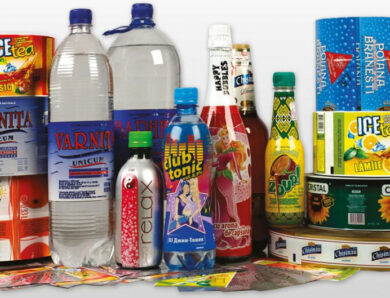Fire hose. Construction, appointment, methods of operation and maintenance
Fire hoses and hose equipment are the basis of fire extinguishers. Variety of technical equipment, which is designed and manufactured to fight fire, huge. From simple mechanisms to devices for automatic control and management of firefighting equipment - this is the range of modern equipment for firefighting. Fire hose - traditional in use, an effective and indispensable attribute of firefighting. Its use is universal and mandatory.
Fire hoses are universal products, used not only in firefighting
Classification of sleeves, their main characteristics
Flexible sleeves are classified according to such properties as the specific application of the product. Many years of practice of production and practical use have identified such types of fire hoses as:
- flexible suction action sleeve;
- pressure head sleeve;
- sleeve pressure-suction application.
Purpose sleeves, working on the principle of liquid absorption is a water intake for replenishment of fire tanks of stationary and mobile structure. Water pumping in such cases is carried out with the use of pumps, fire pumps. Such hoses are used not only for extinguishing fires and replenishing water supplies in fire extinguishing systems. Suction hoses are used to transport various liquids. They are completed not only in fire-fighting systems, but also a variety of technical devices, using the principle of pumping.
The pressure hose supplies liquid to the place of fire extinguishing or to another point of its consumption. The supply is carried out under excess pressure. The end parts of the sleeve, having a certain size, equipped with connecting heads. With their help the required number of segments increases, to achieve the required length. They are mandatory for the full equipment of fire trucks, installations, they complete fire hydrants in buildings for various purposes - from public, to industrial, as well as private apartments and houses.
With the help of a hose you can take water from any source
Fire hose pressure-suction combines the properties of the two principles of operation and application and, thus, provides a wide range of functionalities for the collection and transportation of liquids. They are widely used in firefighting equipment and other applications, as universal.
pay attention! Pressure-suction hoses are successfully used for pumping gasoline, technical oils, other combustible and non-combustible substances, gases.
The main feature of fire hoses is their ability to quickly and efficiently deliver liquid to the scene of a fire, remove water from the flooding site, maintain the water level there, where necessary. There are many technological features in the use of different types of fire hoses. The flexibility of the products allows their compact storage, operational deployment to the required length. Standard specialized heads securely connect sleeve segments, creating the desired configuration and length of transportation.
The device and technical features of the sleeves of the suction action
Because the requirements for fire hoses suction plan are somewhat different, than to pressure head, their design is different. When water is sucked in the system, negative pressure is created, which helps to fill the pipe. A rigid frame is built into its shell to prevent the structure from collapsing. The sleeve shell material is made of vulcanized rubber. For strength, it is covered with a layer of fabric. All this gives the product relative flexibility. Latexed fire hose - one of the types of technological implementation of fire extinguishing and pumping liquids.
You can attach any type of head to the suction hose to connect to various devices
Suction hoses do not have traditional connecting heads, inherent pressure structures. Special heads are used here, providing the necessary connection to a variety of technical devices: pumps, capacitive taps, other elements of communication. Such sleeve designs have a fairly large weight and, relatively low flexibility. For such sleeves the standard provides other parameters, than for products without rigid reinforcement.
Suction hoses are divided into appropriate classes:
- class B - designed for water intake;
- class B - works with liquids of fuels and lubricants: gasoline, fuel oil, oil, diesel fuel, etc.;
- class KShch - is intended for pumping of inorganic connections, such as acids, meadows;
- class P - for transportation of liquid food products, such, both alcohol and spirits, dairy products, drinking water.
Sleeve length of this class, mainly, is four meters. Diameters used - from 5 to 20 centimeters. When used in temperate climates, the range of operating temperatures of products is from minus 35 to plus 90 degrees Celsius.
Sleeve pressure head. Construction, appointment
The most popular and most popular is the pressure hose. The liquid in this sleeve burns under high pressure. The hard base is fabric, impregnated from the inside with waterproofing material. Pressure fire hose, the standard of which requires the manufacturer to meet certain quality indicators, must have the following properties:
- high strength of the product, able to withstand high water pressure;
- ability to withstand mechanical loads on abrasion;
- increased resistance to atmospheric influences - sunlight, decay;
- be neutral to aggressive environments;
- have low internal resistance to water movement;
- have a light weight and minimal dimensions in the skate.
Sleeves differ in characteristics, their purpose is easy to determine by the markings on the outside
Classified by diameter and pressure in the highway, these data are shown in table №1.
Table 1
| A type | Conditional passage | Pressure, MPa |
| RPM | 25, 40, 50, 65, 80 25, 40, 50, 65, 80, 90 Hundred and fifty |
3,0 (30,0) 1,6 (16,0) 1,2 (12,) |
| RPK | 25, 40, 50, 65 | 1,0 (10,0) |
- PKK - operation with fire hydrants of appropriate pressure.
- RPR - work as a part of highways of the corresponding diameter and pressure.
Classified by resistance to external factors by species: general and special performance. In turn, special sleeves are divided into:
- heat resistant, who are not afraid of high temperatures in a fire;
- oil resistant, neutral to petroleum products;
- wear-resistant, withstand prolonged abrasive action.
Useful Information! Percolated pressure hose is endowed with special property to resist high temperatures during laying of the highway on places of ignition. It moistens its entire surface with that liquid, which is transported to the place of extinguishing.
Structurally, the fluid injection sleeve consists of an outer reinforcing frame, woven from fabric of natural or synthetic fibers and an internal waterproofing layer.
Sleeves, woven from natural fibers, often used there, where the climate is temperate and there are no frosts. Linen or cotton threads are afraid of low temperatures, their base breaks when used. Such products are subject to decay. Their service life is short. Positive sides - keep the temperature due to humidity along the length of the highway, light and small in the folded state.
Fire hoses made of synthetic fabrics are as follows:
- from the rubberized reinforced fiber, when the rubber chamber is vulcanized with a tissue layer, ensuring its water resistance;
- latex fire hoses, in which the latex film serves as a waterproofing protective layer; the same latex layer is present in the reinforcing outer shell.
Latexed sleeves are durable and long-lasting
Pressure sleeve, has a double-sided coating, reliable and durable. Latex layer inside and outside provides high hydrostability and surface protection of a sleeve against mechanical influences. Such products are practical to use.
Table, showing the ratio of the through diameter, the length of the sleeve and its mass is below.
Table 2
| D sleeves | Sleeve weight ( not more), kg | ||
| 1 m | 15 m | 20 m | |
| Twenty five | 0,25 | 3,75 | Five |
| Fourty | 0,34 | 5,1 | 6,8 |
| Fifty | 0,45 | 6,75 | Nine |
| Sixty-five | 0,55 | 8,25 | Eleven |
| Eighty | 0,65 | 9,75 | Thirteen |
| Ninety | 0,83 | 12,45 | 16,6 |
| Hundred and fifty | 1,2 | Eighteen | Twenty-four |
Pressure-suction design of the fire hose
This type of sleeve is used to collect fluid material, and for its injection and drainage, depending on the type of work. Products are made according to those tasks, which they will perform. The sleeve itself consists of a textile frame with rubber or latex inner and outer protection. Metal spiral, built-in sleeve body, provides it with the necessary rigidity and relative flexibility, necessary for its functioning.
The sleeve is provided on both sides with cuffs, which connect it to the connecting fittings of various devices or hoses and other elements of liquid transportation. For collection and transportation of combustible liquids the pressure-suction sleeve is made of two layers of rubber - internal and external. Textile serves as a reinforcing layer, and a rigid spiral thread, laid in a frame.
Sleeves of all types are marked with information about their technical parameters, properties and purpose
Technical marking and designation
Fire hoses and hose fittings must be provided properly, standardized by standard marking and designation. Each production batch of fire hoses is provided with a passport, which contains mandatory practical information:
- the company manufactures products;
- calendar date of release;
- TU number (technical conditions);
- serial number of the manufactured batch;
- quantitative composition of the party;
- diameter of the released sleeves for the given party;
- the total length of the supplied sleeves in the manufactured batch;
- VTK mark, about the fact of acceptance of the goods and its conformity.
Usually rubber or latex sleeves are sold in bays weighing 50 kg. They are cut into 20 meters. Before cutting the bay on the part of it to measure, so that no waste remains, and the rest of the bay was distributed evenly over the cut parts. The GR couplings are then fitted to the sleeves.
Importantly! Strapping is made of galvanized wire, which provides tightness and sealing of joints.
A form is drawn up at the place of practical operation of the fire hose, which contains the necessary information, in particular input control data. The person responsible for its operation monitors the maintenance of such a form. At a distance of about 1000 – 1500 mm from the coupling head is additionally marked, for a specific unit, where this product is used.
Store the sleeves should be twisted in the bay or wound on a special spool
Features of application, rules of operation and maintenance of sleeves
Features of practical application, the rules of operation are set out in detail in this document, as instructions for use of fire hoses, which should be in each unit, using products of this type. Storage of products is subject to staff attention, their proper operation, mandatory periodic maintenance of fire hoses.
During storage it is necessary to watch correctness of laying of bays in the car, for the condition of the coils, on which the sleeves are wound. This protects the fire product from excessive wear. The sleeves should be stored in appropriate conditions, proposed by the form, follow, so that they are not exposed to direct sunlight. Products must be clean, with serviceable coupling heads.
When working with fire hoses, make sure that the water supply lines are laid correctly. The route should not have sharp bends, broke. It is necessary to constantly monitor the route of laying the sleeves, according to the places of their connections. Do not allow the highway to run through burning debris and combustible substances, chemical compounds, capable of damaging the high-pressure water supply route.
pay attention! Use an open area or road to lay the pipeline. There, where the roadway intersects, special bridges should be used, protecting the sleeve from damage. When crossing the sleeve of obstacles with sharp fractures, such, as fences, fences, window openings, sharp turns, a special knee should be used (saddle), which will save the route from a sharp bend.
Vertical laying of the highway also requires attention and the use of such equipment, as a hose delay. That should be taken into account, that for correct tracing apply at least one delay on a sleeve. The pressure in the line must be raised gradually, trying to prevent possible water hammer. Latexed and simple sleeve should be protected from mechanical impact. Rope support must be used for vertical movements.
To avoid damaging the sleeve when working with it, special protective devices should be used
In the event of a leak, special hose clamps are used. For the little ones, point damage install a tape clip, and to eliminate leaks up to 10 see apply a corset. In winter, the following is observed:
- at temperatures below 20 degrees water supply in the highway is carried out at high pump speeds, which slightly raises the water temperature, pumped;
- water should be supplied from the deep layers of the open reservoir, where its temperature is higher;
- after the sleeves are in the cold, the remnants of water immediately drain, frozen areas are heated with steam or hot water;
- transportation of frozen hoses must be performed without kinks, broke, which can damage the tissue, latex or rubber layer of the sleeve.
Fire hoses should be serviced before storage. If necessary, make repairs, check the integrity of the shell, the density of the connecting heads. Fire-fighting tools must always be ready number one and on the first demand to provide water to the place of ignition.
Maintenance of fire hoses requires not only the diligence of service personnel, but also special equipment and devices. Special machines are produced for these purposes, such as:
- washing machines;
- connecting head attachment machines;
- winding machine in a rolling pin;
- special installation for drying and talking of sleeves;
- capacity, in which soaking of dirty products is carried out;
- hydraulic test rig.
This equipment simplifies the time-consuming process of working with fire hoses, their recovery, cleaning, tests, storage. All actions with the responsible part of the fire tool are recorded in the form. Tests of fire hoses are carried out in due time. Knowledge of the range of firefighting equipment helps to use the products correctly, keep them properly prepared for emergency use.




